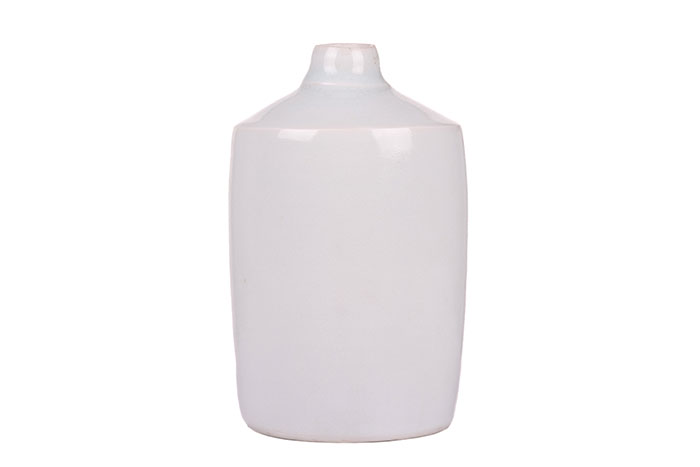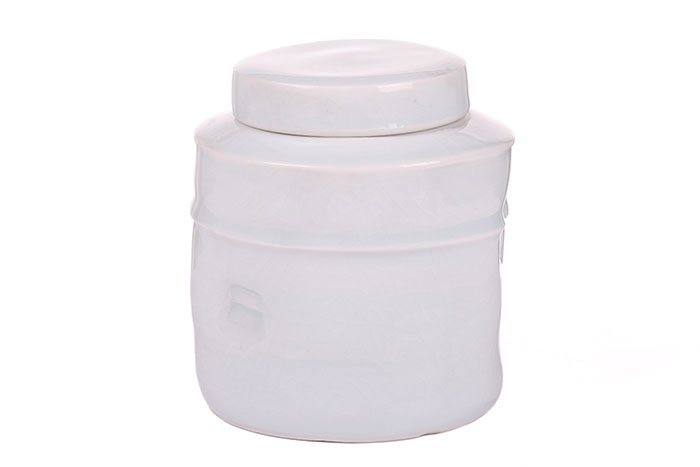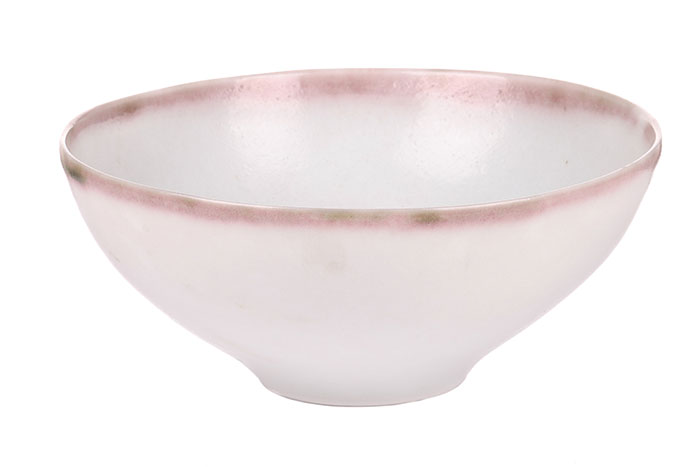A Guide to the Work of Edmund de Waal
As well as a master potter, de Waal is also an acclaimed author
12/07/2024
Contemporary British artist and ceramicist Edmund de Waal is well known for his works ranging from miniature vessels to large-scale pottery installations. Despite originally training in stoneware, he has spent much of his career working in porcelain, which he describes as “an inscrutable material, in the sense that it comes from earth but seems to aspire to something else. It seems closer to glass–closer to air–than the earth.” As well as a master potter, de Waal is also an acclaimed author who has won many awards for his bestselling memoir, The Hare with Amber Eyes, which has been translated into twenty-nine languages and sold more than a million copies.
Born on the 10th of September 1964 in Nottingham, United Kingdom, into a family of writers and academics, de Waal was just five years old when he started taking an evening pottery class at the Lincoln School of Art. He recalls that his first creation was “Very very very heavy and very very very white.”
Edmund De Waal (b.1964), a pale blue celadon crackled glaze bottle vase of cylindrical form
When de Waal’s father was appointed the Dean of Canterbury Cathedral, the family relocated to the Chancery. The local King’s School employed a resident potter, the master Geoffrey Whiting, who had been a student of Bernard Leach. From the age of twelve, de Waal would spend his free time in the pottery, carrying out chores and learning as much as he could. When he was seventeen, he deferred his entry into the University of Cambridge to undertake a two-year apprenticeship under Whiting, during which time he made hundreds of earthenware and stoneware pots.
In 1983, de Waal commenced his studies to read English at Trinity Hall, Cambridge. He was awarded a scholarship and graduated in with first class honours in 1986. In his early twenties he moved to Herefordshire, where he set up a rural studio to produce stoneware in the “Leach tradition”. The venture was financially unsuccessful and within two years de Waal moved to Sheffield where he began experimenting with porcelain, which would become his central material.
In the early 1990s de Waal obtained a Daiwa Anglo-Japanese Foundation Scholarship; a unique programme offered to outstanding British citizens, it provides the opportunity to work placement, language study and homestay in Japan. During his studies in Tokyo while working alongside Japanese ceramicists at the Mejiro Ceramics studio, de Waal researched what would become his first book, a monograph of Bernard Leach (1997). This controversial novel served as a reassessment of Bernard Leach, with accusations of a poor understanding of Japanese culture and narrow views. It was at this time that de Waal started drawing fresh inspiration from new sources, including potters Lucie Rie and Hans Coper, contemporary artists such as Donald Judd and the celebrated masters of Meissen and Sevres. His concept of a series of porcelain jars, arranged in groups and sequences was born. The vessels featuring pushed-in, gestural sides, illustrative of his newfound ingenuity.
Edmund De Waal (b.1964), a pale blue celadon crackled glaze cylindrical jar and cover
De Waal returned to London in 1993 and set up a studio alongside Julian Stair. With a renewed sense of creativity and passion, de Waal experimented with celadon glazes and expanded his repertoire to include lidded pots, ginger jars, cylindrical bowls, and jugs, which he arranged into groupings or “cargoes.” These varying porcelain vessel displays remain profoundly significant in his career to this day.
De Waal’s works became increasingly popular and in 1999 he was invited to hold his first public exhibition at the modernist High Cross House in Devon. In 2002 his Porcelain Room exhibition at the Geffrye Museum (now the Museum of the Home), in east London would be the catalyst for future exhibitions and installations across the country, for both private and public clientele. His reputation as a functional potter expanded to a revered artist who works almost entirely with groups of pots, gathered in vitrines or purpose-built architectural structures, titled with evocative descriptions.
The unprecedented success of de Waal’s family memoir in 2010, The Hare with Amber Eyes: A Hidden Inheritance, precipitated the explosion of his reputation far beyond the realm of the art world. De Waal shared the painful story of his family, the Ephrussi, once a very wealthy and prominent European Jewish banking dynasty. Their property was confiscated by the Nazi’s in 1938 and the family lost almost everything. The book centres around the fate of a collection of 264 Japanese netsuke miniature sculptures which were saved by a faithful servant and have been passed down through the family for five generations. The book earned de Waal a Costa Book Award, the Galaxy New Writer of the Yearbook Award and the Royal Society of Literature's Ondaatje Prize. De Waal has since published two further books, The White Road (2015) which details his journey with porcelain, and Letters to Camondo (2021). He describes himself as a “potter who writes”.
Edmund De Waal (b.1964), a pale blue celadon glazed bowl, with manganese rim
De Waal’s exquisite craftsmanship is complemented by his extraordinary breadth of knowledge, from Song Dynasty pottery to Bauhaus design, through Conceptual and contemporary art. His creation and careful arrangement of ceramic vessels has been described as a form of poetry.
De Waal lives in London and continues to transform spaces with his works of art. His works are held in the collections of the Museum of Fine Arts in Houston, the Victoria and Albert Museum in London, and the Museum of Arts and Design in New York.
“I work with things. […] And then I arrange them, find places to put them down, on shelves or within vitrines, in houses and galleries and museums, move them around so that they are in light or in shadow. They are installations, or groupings, or a kind of poetry. They have titles, a phrase or a line that helps them on their way in the world.” - Edmund de Waal
Read more
How to Identify Antique Pottery?
Are you contemplating parting with any ceramics or works by Edmund De Waal?
With a global audience of over 10 million active bidders, Dawsons can secure the highest prices.
Get in touch with an expert Valuer for confidential sales advice, we would be delighted to help you:


